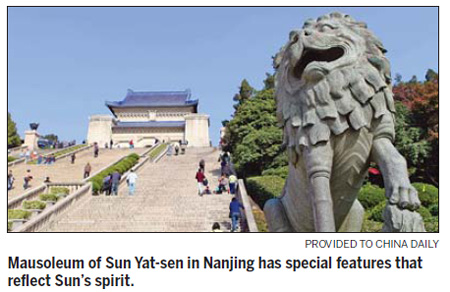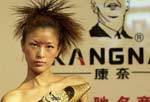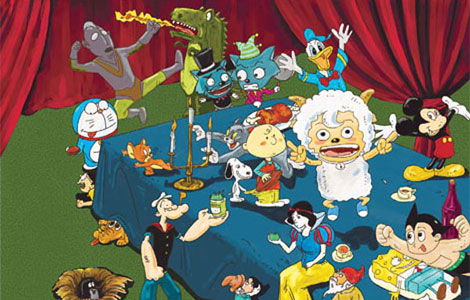Tips and Articles
Special treat in Nanjing
Updated: 2011-04-05 07:40
By Sun Li (China Daily)

For those wanting to take a tour of Nanjing, the capital of Jiangsu province, the mausoleum of Sun Yat-sen is a must-see.
Sun Yat-sen (1866-1925), known as the "Father of Modern China", was a physician and a forebear of the Chinese revolution, which overturned the Qing Dynasty (1644-1911), China's last monarchy.
In 1912, Sun established the Republic of China and was named its first president. Nanjing was the home of the Republic's provisional government, and toward the end of his life Sun expressed a desire to be buried there.
Accordingly, work on his mausoleum began on March 12, 1926, a year after Sun's death, and was completed in 1929.
The edifice faces south on an 80,000-square-meter plot of ground on Purple Mountain, in Nanjing's eastern suburbs. The area and its special features are reminiscent of Sun's spirit.
The complex is shaped like an alarm bell, echoing Sun's desire to "inspire the masses to build the Republic of China". The semi-circular entrance area resembles the rounded top of the bell and is surrounded by a sweeping lawn and lush foliage, an indication of the serenity and solemnity of the memorial.
The entrance itself is a granite arch with a glazed tile veneer, and most likely the first place visitors want to pause and take pictures. It has two Chinese characters - bo ai (universal love) - from Sun's handwriting, inscribed with gold trim to convey a harmonious message.
A long pathway leads up to the sacrificial hall at the top, and you'll often see energetic children rushing up, as if in anticipation of seeing just where Sun lies.
The triple arch gate lets a person feel the grandeur of the place and further understand the cause that Sun struggled for during his lifetime.
From the tomb gate the pathway becomes a wide stairway with 392 steps. That number, not surprisingly, is not arbitrary.
The guidebook explains that it represents China's 392 million people at that time paying homage to the leader who brought them the idea of democracy and freedom.
As you progress along the steps, you face the main body of the mausoleum, the sacrificial hall. At this point, I suggest that the curious, or excited visitor slow down, pause, turn around and regard the grandeur.
Specials

Share your China stories!
Foreign readers are invited to share your China stories.

Fill dad's shoes
Daughter and son are beginning to take over the family business of making shoes.

Have you any wool?
The new stars of Chinese animation are edging out old childhood icons like Mickey Mouse and Hello Kitty.